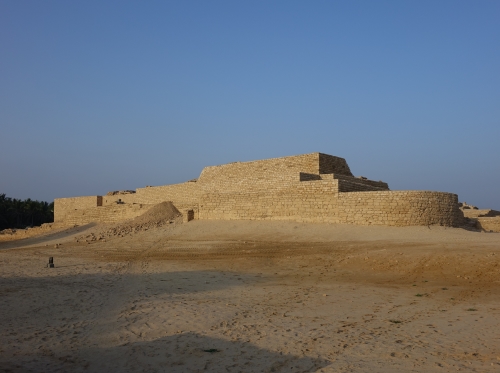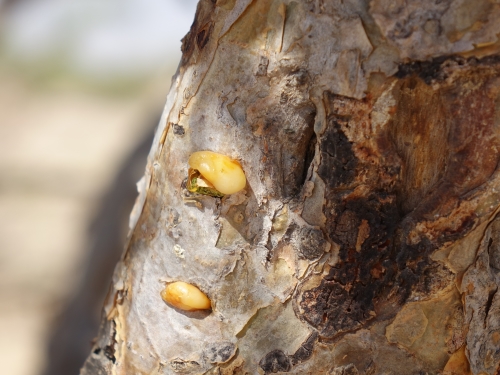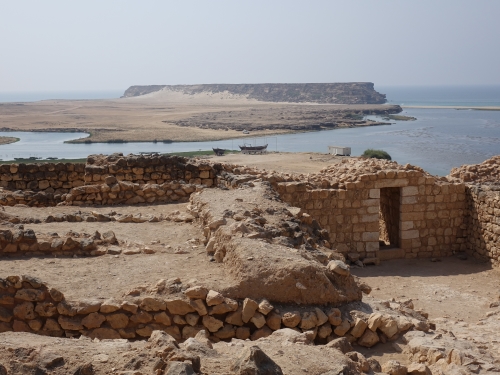Blog WHS Visits
WHS #658: Land of Frankincense
The Land of Frankincense is a good reason to visit the Dhofar region in southern Oman. I flew from Muscat to its capital Salalah and stayed there for 3 nights. Date palms give way to coconut palms and sandy white beaches, which reminded me of Sri Lanka. It’s not an uncommon sight here to see camels crossing the motorway or a camel caravan moving along through the desert. (Frank)incense is everywhere here in the south: stepping into the modern Salalah Garden Mall, the smell already comes to you. The local Al-Husn Souq only sells typical Omani hats and frankincense resin per kilo.

In the outskirts of Salalah lies the Al-Balid Archaeological Park with its Land of Frankincense museum, 1 of the 4 locations that comprise this WHS. I spent 1.5 hour there in the late afternoon (it's open til 8 p.m.), a perfect time to enjoy its setting of ruins and birds via the walking trails. Al-Balid was a port, so its remains are located near the water. The archaeological site is quite extensive, with a citadel and a grand mosque.
The next day I drove to a second location, the 'incense forest' Wadi Dawkah, a 45-minute drive north of Salalah. Here incense has been cultivated since ancient times, and the forests are still in production. To make the place – which essentially is an agricultural field - more attractive for visitors, they have added a parking space, information panel and public toilets. I even wasn't the only tourist here: after me a couple with their guide made a quick stop.

The incense is extracted in a similar way to rubber: by cutting slices into the trees, causing the resin to leak out and dry. Only after a number of cuts you get good quality incense resin. The name 'forest' suggests something natural, but it is more like a plantation where the trees are nicely planted in a row and watered by garden hoses. You can just walk among the trees. Only at a single tree I saw some resin. The trees were in a pretty light green blossom though. A visit takes half an hour at most, but I found it worthwhile.
On my last day in the south I drove the coastal route to the interesting town of Mirbat, including a stop at the lagoon of Khor Rori and the excavations of Sumhuram. Again this is a neatly laid out archaeological site, with paths and information panels. Especially the location here is very beautiful - from the higher ruins of the fortress you have a view of flamingos and the sea bank that cuts off the lagoon from the sea.

I skipped the 4th location (Shisr) because I didn't think the long drive would be worth it. The history of the cultivation of and trade in incense cannot be seen anywhere else in the world as easily as here in Dhofar, so it certainly is an educating WHS. Ethiopia and Somalia are the largest producers of fine resin nowadays, so maybe more intensive cultivation can be seen there. Fun bit of trivia: the latter provides the Roman Catholic Church with most of its stock.
Els - 21 April 2018
Comments
Colvin 22 April 2018
Nice to see the archaeological site of Al-Balid. That's one of the ports I read about in Ibn Battuta's memoirs of his travels. (Apparently the people there were very welcoming to strangers)